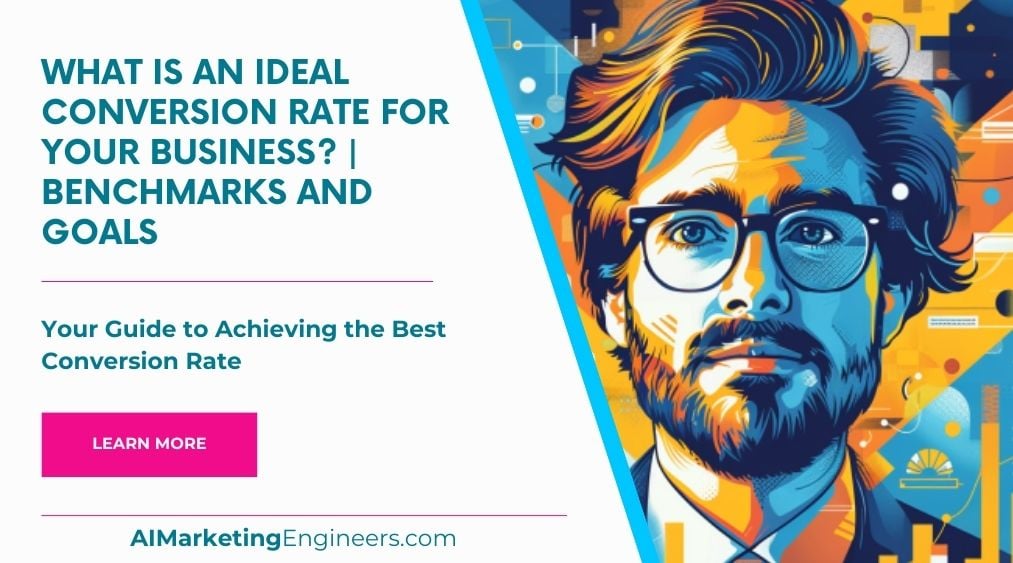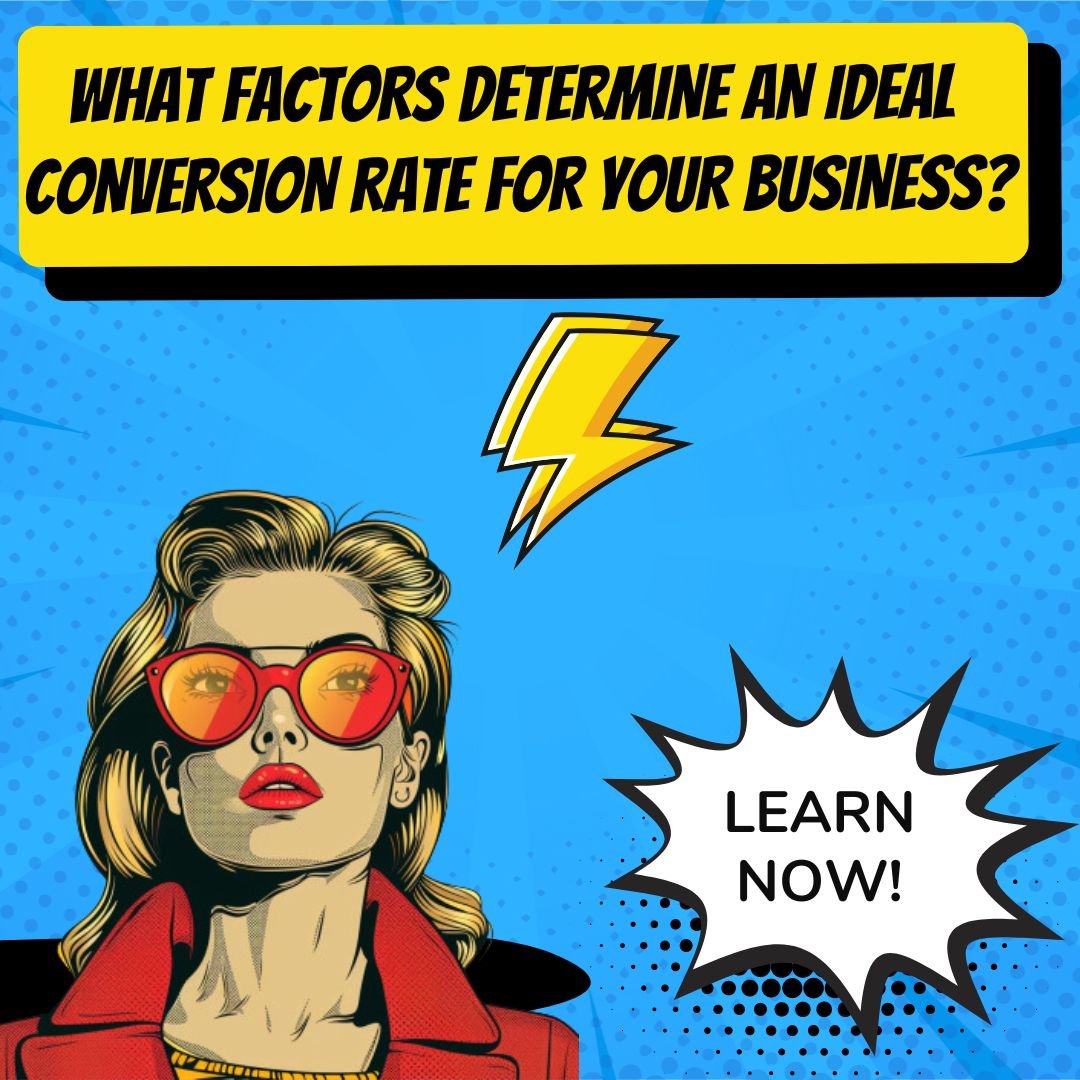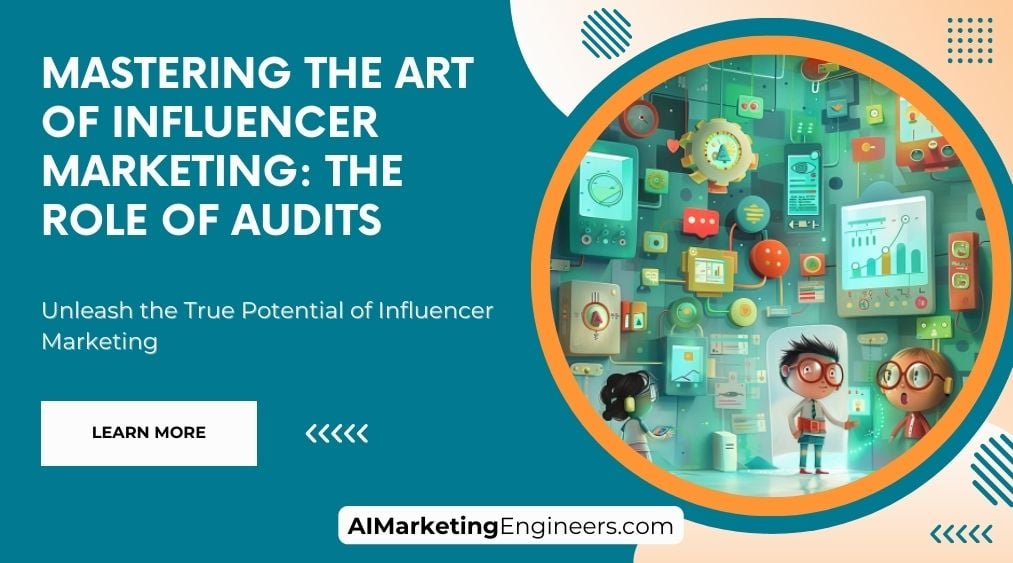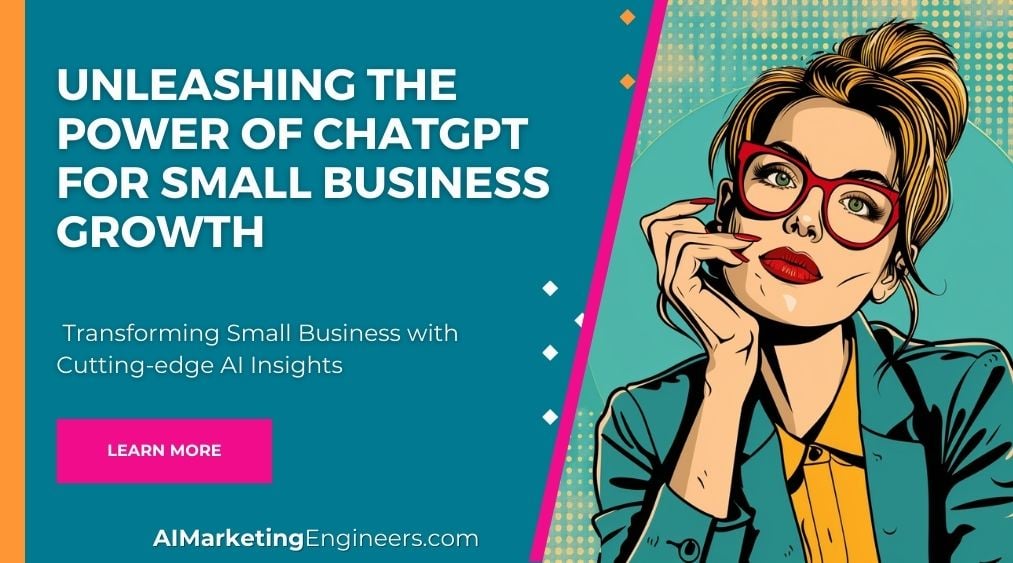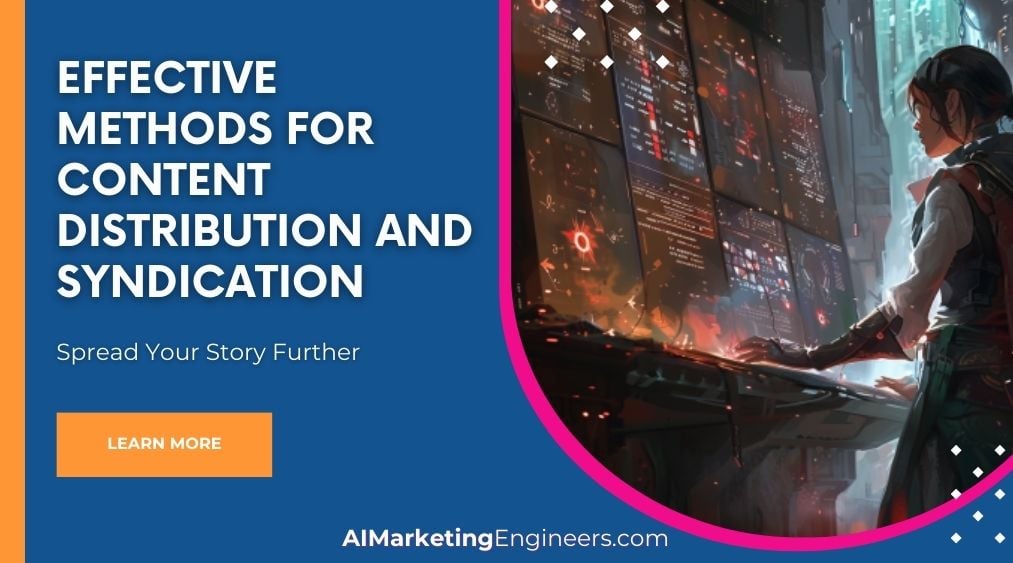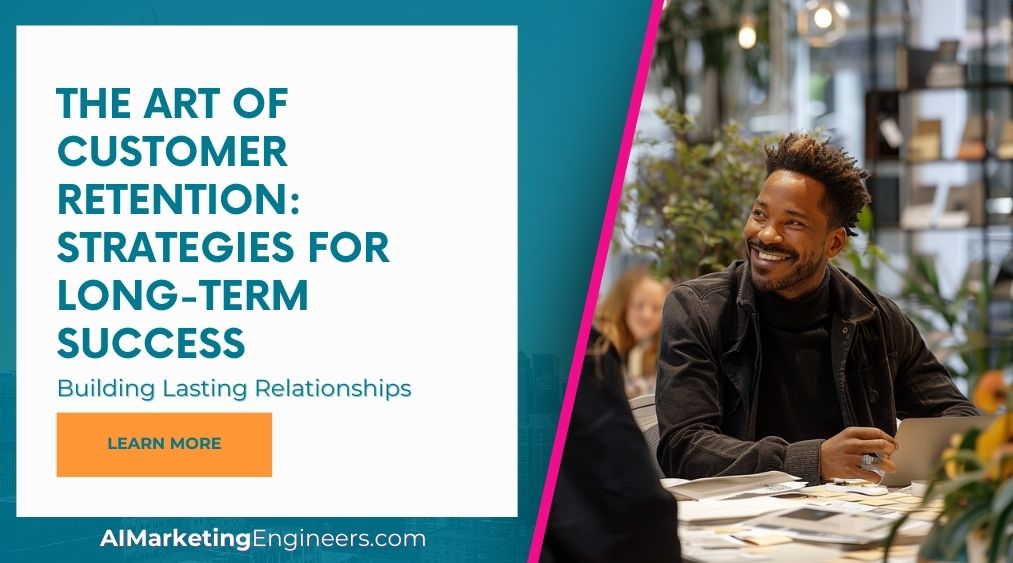Key Takeaways
✅ There's No One-Size-Fits-All Ideal Conversion Rate: It depends on your industry, marketing channel, and business goals. The average across all industries is around 3%, but top performers can reach 11.45% or higher.
✅ Use Benchmarks to Set Realistic Goals: Look at conversion rate averages for your industry and specific channels (e.g., email marketing, paid ads) to establish a baseline. Aim to be in the top 25% for your niche.
✅ Continuously Optimize for Improvement: Conversion rate is a fluid metric. A/B test different elements (website design, calls to action) and analyze results to keep raising your conversion bar.
Introduction
Ever wondered what magic number can skyrocket sales and customer engagements for your business? There's no mystical spell, but there is something just as powerful: your business's conversion rate. That's right, it's not just about traffic. Imagine two stores, one bustling with customers but with no one buying, the other less crowded but with every second visitor making a purchase. Which would you prefer? That's the power of an ideal conversion rate – it turns visitors into buyers. But what's a good rate, and how do you reach it?
In this ride through conversion rate mastery, we're not just throwing numbers around. We’re going to delve into why this metric is your secret weapon in business warfare. We’ll see how the pros do it, how your industry average stacks up, and most importantly, how you can lift those numbers. From benchmarks to Conversion Rate Optimization (CRO) strategies, this isn't just another article. It's the beginning of more sales, more growth, and, yes, more happy dances at your next revenue report. So why not stick around to unlock the actionable insights and groundbreaking information that can help you carve out a new path to success?
Top Statistics
| Statistic | Insight |
|---|---|
| The average conversion rate for websites is 2.35%. | Your website should aim for this number as a baseline, but always look for ways to exceed the average to stay competitive. |
| Top websites have a conversion rate of 11% or more. | This stat sets a high bar, representing the pinnacle of optimization and user experience that businesses can strive to achieve. |
| 41.6% of companies have small testing teams of 2-10 people. | It shows that you don't need a huge team to start making impactful tests, what is important is to begin the process of optimization. |
| The average ecommerce cart abandonment rate is 69.57%. | Capturing even a fraction of these potential sales could lead to a significant uplift in revenue for ecommerce businesses. |
| A good conversion rate varies depending on the industry and marketing channel, but anything between 2% and 5% is considered solid. | This benchmark is crucial as it helps businesses set realistic goals tailored to their own industry standards and successes. |
Understanding Conversion Rates in Marketing
When stepping into the digital storefront of a website, not every visitor is going to buy something or sign up for your newsletter. The conversion rate is like the pulse of your website's success, providing a clear signal of how well your site entices visitors to actually do something. Think of it as a litmus test for your online effectiveness; a metric that answers the question, "Is my digital space doing its job?" To calculate it, you simply divide the number of conversions by the total number of visits, then multiply by 100 to get a percentage. This piece of data is like a beacon, guiding website owners on where to sail their improvement efforts.
The Significance of Conversion Rates to Your Business
In the world of click-and-mortar, a storefront's performance isn't just about foot traffic—it's about how many passersby walk in and leave with a purchase. In digital terms, this is where conversion rates shine, serving as essential indicators of your website's success in transforming visitors into customers or leads. But why should you care? For starters, this percentage sheds light on how well your site persuades prospects. Plus, it's a powerful tool for pinpointing weak spots in your funnel. Are people bouncing off the minute they land on your page? Or are they just not pulling out their wallets? By understanding your conversion rate, you can set realistic targets for improvement that align with your business goals.
A Glimpse at Industry-Specific Conversion Rates
So, what's a good conversion rate? Well, that's like asking how long a piece of string is - it depends. E-commerce sites generally see rates between 1.6% and 3.3%, but if you're selling high-end electronics versus books, the numbers will differ. Dive into B2B territory, and patience is key, because the sales cycle's a marathon, not a sprint, leading to lower conversion figures. Over in the Food and Beverage sector, a delicious range of 1.5% to 6.2% is common, while the Professional Services and Finance industries often boast higher rates, thanks to the big bucks involved in their transactions.
Key Factors Influencing Your Conversion Rates
Imagine your website as a market stall. Everything from the way your goods are displayed (website design) to how you chat up potential buyers (marketing strategies) can make or break a sale. The same goes for conversion rates in the digital realm. Factors that can sway your stats include the competitiveness of your industry type, the complexity of your offerings, and the alignment of your marketing. Even the convenience of your website on smartphones (device optimization) and how well you cater to the local crowd (location specificity) can cause your conversion rates to fluctuate.
Paving the Road to Realistic Conversion Goals
To avoid chasing pipe dreams, start by sizing up your current conversion rate. Is it on par with the industry average, lagging, or are you the outlier setting the curve? By scrutinizing industry standards, you can establish attainable conversion targets. But remember, these are not set-in-stone figures; they're starting blocks for ongoing optimization. It's a continuous cycle of measuring, tweaking, and improving. Getting caught up in chasing after mythical 'perfect' conversion rates is like trying to find a unicorn—it's more fruitful to focus on scaling up gradually and sensibly.
In the world of online transactions and interactions, taking the pulse of your conversion rate remains a core health check for your website. Whether you're in the game for the clicks, the sign-ups, or the sales, fine-tuning the cogs and gears behind those actions is what will steer your digital strategy towards success. Keep a steady hand on that pulse, and you'll have the insight needed to draw in, engage, and convert the ever-flowing stream of virtual foot traffic.
AI Marketing Engineers Recommendation
Recommendation 1: Benchmark Against Industry Averages: Before setting a goal for an Ideal Conversion Rate, it's essential to know where your business stands relative to industry standards. While average conversion rates can vary widely by industry, with e-commerce averaging between 1% and 2%, and B2B sometimes seeing rates as high as 5% to 10%, use this data as a starting point. Align your conversion rate goals with these benchmarks but customize them according to your specific business model, making sure to take factors such as the price point, market competition, and customer journey complexity into account.
Recommendation 2: Enhance Customer Journey: Utilize current trends in user experience personalization and AI-driven analytics to enhance the customer journey for better conversion rates. Studies show that personalized calls to action (CTA) convert 202% better than default versions. Map out the customer journey and identify points where personalization could significantly impact conversion. This might include personalized product recommendations, tailored email marketing campaigns, or dynamic web content that responds to a user’s previous behavior.
Recommendation 3: Leverage A/B Testing Tools: Invest in A/B testing tools to optimize conversion-related elements on your website or in your marketing campaigns. Tools like Optimizely, Google Optimize, or Unbounce allow you to test different versions of web pages, CTAs, emails, and more to see which variation drives the best conversion rate. Remember, what works for one audience segment may not work for another, so segment your audience and test accordingly. Continuous A/B testing backed by solid analytics can lead to higher conversion rates over time by constantly refining user experience based on real data.
Relevant Links
- Maximize Your Facebook Ads ROI: Audience Targeting and Ad Audits
- Elevate Visibility with SEO-Optimized Product Titles and Descriptions
- A/B Testing and Conversion Rate: Techniques for Campaign Optimization
- Decoding the German Digital Consumer: A Marketer's Guide
- Demystifying the Indian Digital Consumer: Key Insights for Marketers
Conclusion
Wrapping up our deep dive into conversion rates, it's clear that they serve as the heartbeat of a successful online strategy – a direct signal of how well your business resonates with customers. But grasping the ideal conversion rate for your business isn't about chasing a mythical, one-size-fits-all number. It's a nuanced dance that takes in the rhythm of industry-specific benchmarks and your unique business tempo.
Keep this in mind: benchmarks for e-commerce might hover between 1.6% and 3.3%, while professional services could see higher rates. Yet, what does this mean for you? It's simple, really. Start by taking a hard look at your current conversion rate. Does it feel underwhelming? Could it be better? Then, map out real, achievable targets – not plucked from thin air, but informed by the benchmarks we've outlined, always considering the nature of your product and customer.
Remember, while metrics provide guidance, improvement is an ongoing journey, not a destination. By focusing on delivering a stellar user experience and refining your marketing strategies, you could not only meet but surpass your goals. And next time you check, your conversion rate might just be the envy of peers, leading to tangible growth in your customer base and bottom line. So, what's your next move to edge that percentage a little higher? Keep measuring, optimizing, and aiming for that sweet spot where visitors can't resist becoming loyal customers.
FAQs
Question 1: What is a conversion rate?
Answer: A conversion rate is the ratio of visitors who do what you're hoping for—like buying something, signing up, or filling out a form—compared to everyone who stops by your site.
Question 2: How do you calculate a conversion rate?
Answer: To get your conversion rate, just divide the number of times people did what you wanted by the total number of visitors and then multiply that by 100.
Question 3: Why are industry benchmarks important?
Answer: Benchmarks give you a handle on what's usual for your business scene—they help to set sensible goals, spot where you could get better, and track how well you're doing over time.
Question 4: What are the most significant recent changes in Conversion Rate Optimization?
Answer: Conversion Rate Optimization is always changing, with new tech and shifts in what users want. Lately, there's a big push for things like artificial intelligence, tailoring experiences to each person, and making sure websites are primed for mobile users.
Question 5: How can companies effectively measure the success of their CRO strategies?
Answer: To truly measure what you're achieving with CRO, you need clear goals that you can measure, keenly watch important stats like conversion rates, the value of orders, and bounce rates, and use testing to suss out what's working.
Question 6: What are the key factors influencing conversion rates in differentangement paid on topasis. industries?
Answer: Customer behavior, how tricky the buying decision is, and the type of product or service can all play a part. For instance, web shops often see about 2-3% of visits turning into sales, but B2B software companies might see less because it takes longer to sell pricier things.
Question 7: How can you improve your conversion rate?
Answer: To up your conversion rate, get into your customer's head, earn their trust, and make your forms easy to fill out. Talk like they do, cut out any unnecessary bits, and make it crystal clear what you're asking for.
Question 8: What questions should you ask when your conversion rates are below average?
Answer: Think about whether people really want what you're selling, if you're talking to the right crowd, if you've built up enough trust, and what your numbers are telling you about the whole process. Peek at what the competition's doing and figure out where things are getting sticky.
Question 9: What are the key things to look for in a conversion rate optimization agency?
Answer: Keep an eye out for agencies showing off successful projects, who base their strategies on data and know the ins and outs of improving conversion rates. They should get your business and be able to lay out how they'll help you specifically.
Question 10: What advice do you have for companies just starting with CRO?
Answer: Begin by digging into your performance data and understanding how folks behave on your site. Focus on the easy wins, pour resources into A/B testing, and foster a culture that's all about optimizing and constantly getting better.
Academic References
- Ruler Analytics. Conversion Rate Benchmarks by Industry [Study Findings]. This comprehensive analysis pinpoints that the average conversion rate across fourteen varied industries stands at 2.7%, with sectors like professional services and finance leading the pack with the highest conversion rates.
- WordStream. Industry Benchmarks for Google Ads [Research Report]. According to WordStream's findings, while the average B2B company sees a conversion rate of 2.23%, the most successful ones—those in the top 10%—are hitting conversion rates up to 11.70%.
- Adobe. E-commerce Conversion Rates [Research Summary]. Adobe's data analysis reveals a broad range of average ecommerce conversion rates from 1% to 4%, with a slightly more precise figure for global ecommerce websites at 2.58% and US websites at 2.57%, painting a picture of the ecommerce landscape's performance.
- WordStream. Google Ads Average Conversion Rates [Data Analysis]. In a separate study by WordStream, the firm discovered that the average conversion rate for Google Ads runs at 4.40% on the search network, whereas the display network experiences a notably lower rate of 0.57%.
- Chili Piper. The Value of Conversion Rate Optimization [Expert Opinion]. Emphasizing the strategic importance of Conversion Rate Optimization (CRO), Chili Piper brings to light the variability in conversion rates based on multiple factors such as industry specificities, product type, and sources of traffic, underlining CRO as a key revenue and long-term success driver.
